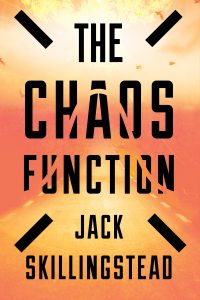Una McCormack Guest Post–“Writing Within Boundaries: The Challenge of Franchise Fiction”
I often think of writing as a process of entering into a contract with your readers: when you persuade someone to read your work, you’re making promises to them that your work will deliver in certain ways. Certain genres, it seems to me, make specific contractual demands on a writer–for example, I doubt that Hilary Mantel’s The Mirror and the Light is going to end with Henry VIII abdicating and the Catholic Church being re-established. Science fiction does the same; franchise fiction–at least, the kind that I write–makes its own promises to the reader. By having to pay attention to certain “fixed” events established on-screen, the franchise fiction writer sometimes has to be as much a writer of historical fiction as science fiction.
I sometimes describe my Star Trek: Deep Space Nine novel The Never-Ending Sacrifice as a historical novel that happens to be set on an alien planet. This novel is set on Cardassia Prime across a period of several years (roughly the same time period covered by the TV show) but from the perspective of the antagonists, the Cardassians, who are responsible for the war that comprises the main storyline of the later seasons of DS9. As such, I was bound to keep to events that had been established on-screen–the capture of DS9, the entry of the Romulans into the war, the fall of Cardassia Prime–indeed, that was the point of the story! My methodology writing the book was much as I imagine a historical novelist’s must be: establishing dates, compiling lists of significant figures such as political leaders (and their dates in office). Events in my book grew out of these limits: What must have happened between event A and event B? What could have happened, given those two events? I found this a very fertile mode of storytelling. Nothing in the book contradicts what is seen on screen (at least, I hope not!), but the story–and most of the characters–were completely new, patching together what was glimpsed on-screen into what I hope was a satisfactory whole. The pleasure of reading–the contract that I offered the reader–was to enjoy the retelling of a familiar story through an entirely fresh perspective.
Other books that I’ve written in Pocket’s Star Trek range have allowed me to expand this future history of the Cardassian Union, and have drawn on texts from the Star Trek expanded universe, aiming for consistency while establishing space for my own stories. The Crimson Shadow, which is set after the end of DS9, and during a period of stabilization on Cardassia, draws upon the world-building done by actor Andrew J. Robinson (Garak) in his novel A Stitch in Time. It was an interesting challenge to remain true to three separate creative visions: the original series, Robinson’s, and my own vision of Cardassian society and culture.
The Star Trek book range is currently a fairly complex universe, with many overlapping stories. (The Crimson Shadow was part of a five-book series, Star Trek: The Fall, written with four other authors: a thoroughly enjoyable project in its own right, working to satisfy all our various ideas for the series.) I think of the books as fulfilling a role similar to that fulfilled by the New Adventures when Doctor Who was off-air. They are the sole place where stories set in the Star Trek universe are being told (the J. J. Abrams films inhabit their own timeline). As such, the readership is dedicated, has bought into the continuing narrative, and is interested in seeing that narrative furthered.
*Spoiler Alert*
The space station Deep Space 9, for example, is now a completely new facility, crewed by an almost entirely new staff (there is crossover from Star Trek: The Next Generation too: the current commander is Ro Laren, and Beverly Crusher has been CMO on the station for a few books). Anyone new to the range picking up my current book, The Missing, expecting Sisko, Kira, Bashir, etc., might find themselves confused. They will find plenty of sniping between Odo and Quark, however. Some things remain the same.
I’m often asked whether writing franchise fiction constrains my writing in any way. I’ve found it’s much better to think of these boundaries as challenges rather than limitations. There’s as much fun to be had from writing a sonnet or a villanelle, in working with a tight form, as there is from writing free verse. Sometimes those limits are exactly what makes the writing process challenging and interesting.
About the Author
Una McCormack is a lecturer in creative writing at Anglia Ruskin University, Cambridge, and a New York Times bestselling author. She has written six Star Trek novels for Simon and Schuster, including her most recent, The Missing, and two Doctor Who novels for BBC Books, The King’s Dragon and The Way through the Woods. Her audio dramas, based on Doctor Who and Blake’s 7, have been produced by Big Finish. She lives in Cambridge with her partner, Matthew, and their daughter, Verity.




One of the great joys of writing completely unauthorized fan fiction was working out my own ideas with familiar settings and familiar characters. I had a blast doing it. And, in the end, I think I came out a better writer than when I went in. Would that there was a market for it…